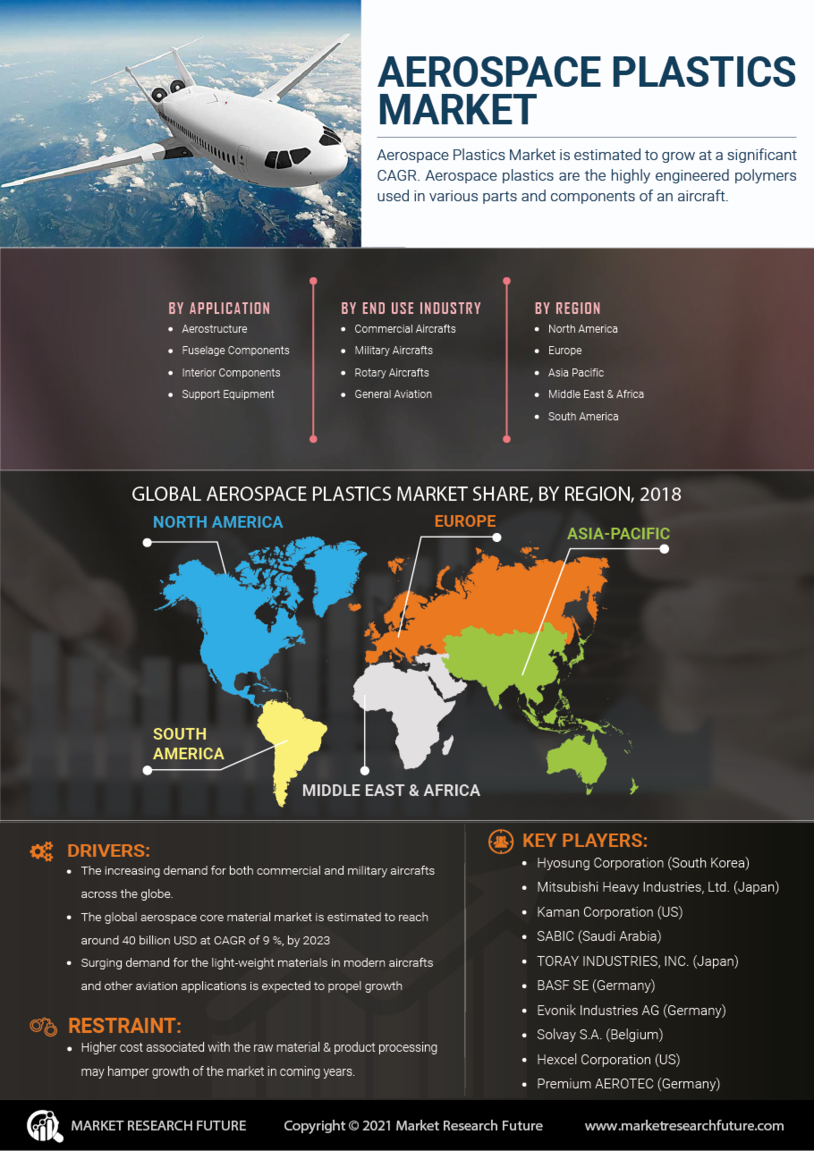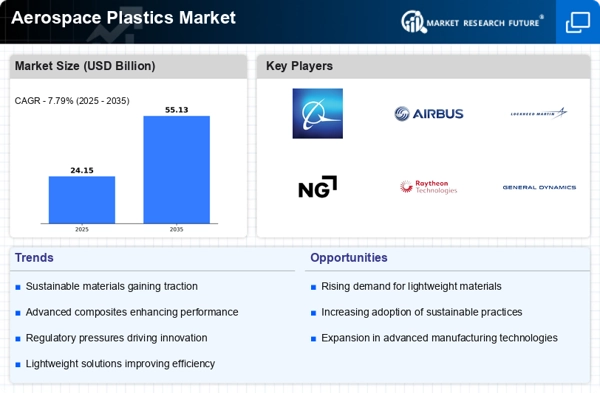Regulatory Compliance
Regulatory compliance is a critical driver in the Aerospace Plastics Market, as stringent safety and environmental regulations shape material selection and manufacturing processes. Aerospace manufacturers must adhere to various international standards, such as those set by aviation authorities and environmental agencies. Compliance with these regulations often necessitates the use of advanced materials that meet specific performance criteria, thereby influencing the types of plastics utilized in aircraft production. This focus on compliance not only ensures safety but also fosters innovation in material development. As regulations evolve, the market is likely to see a shift towards more advanced, compliant materials, potentially driving growth at a rate of 5% over the next few years.
Sustainability Initiatives
The Aerospace Plastics Market is increasingly influenced by sustainability initiatives aimed at reducing environmental impact. Manufacturers are adopting eco-friendly materials and processes to meet regulatory requirements and consumer expectations. The shift towards bio-based plastics and recyclable materials is notable, as companies strive to minimize their carbon footprint. This trend is reflected in the growing demand for lightweight, durable materials that enhance fuel efficiency in aircraft. As a result, the market for aerospace plastics is projected to expand, with an estimated growth rate of 5% annually over the next five years. This focus on sustainability not only aligns with global environmental goals but also offers competitive advantages for companies that prioritize eco-conscious practices.
Technological Advancements
Technological advancements play a pivotal role in shaping the Aerospace Plastics Market. Innovations in material science have led to the development of advanced composites and polymers that offer superior performance characteristics. These materials exhibit enhanced strength-to-weight ratios, thermal stability, and resistance to harsh environmental conditions. The integration of additive manufacturing techniques, such as 3D printing, is revolutionizing production processes, allowing for more complex geometries and reduced waste. As a result, the aerospace sector is witnessing a shift towards more efficient manufacturing methods, which could potentially reduce costs and lead times. The market is expected to see a compound annual growth rate of approximately 6% as these technologies become more widely adopted.
Growing Investment in Aerospace Sector
Growing investment in the aerospace sector is a significant driver for the Aerospace Plastics Market. Increased funding from both public and private sectors is facilitating research and development initiatives aimed at enhancing aircraft design and performance. This influx of capital is enabling manufacturers to explore new materials and technologies that can improve efficiency and reduce costs. Furthermore, the expansion of the aerospace industry, particularly in emerging markets, is creating new opportunities for the adoption of advanced plastics. As investments continue to rise, the market for aerospace plastics is expected to experience robust growth, with projections indicating a compound annual growth rate of around 5.5% in the coming years.
Increased Demand for Lightweight Solutions
The Aerospace Plastics Market is experiencing a surge in demand for lightweight solutions, driven by the need for improved fuel efficiency and performance in aircraft. As airlines seek to reduce operational costs, the adoption of lightweight materials has become a strategic priority. Plastics and composites are increasingly replacing traditional metals in aircraft design, contributing to significant weight reductions. This trend is underscored by the fact that every kilogram saved can lead to substantial fuel savings over the aircraft's lifespan. The market for aerospace plastics is projected to grow at a rate of 4.5% annually, as manufacturers continue to innovate and develop materials that meet the rigorous demands of the aerospace sector.


















Leave a Comment